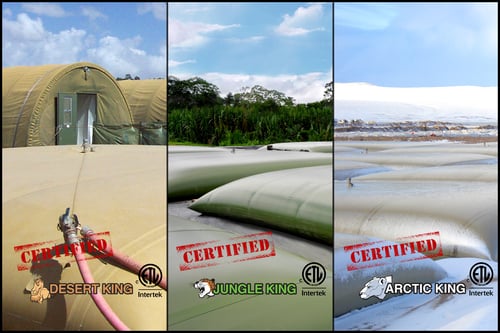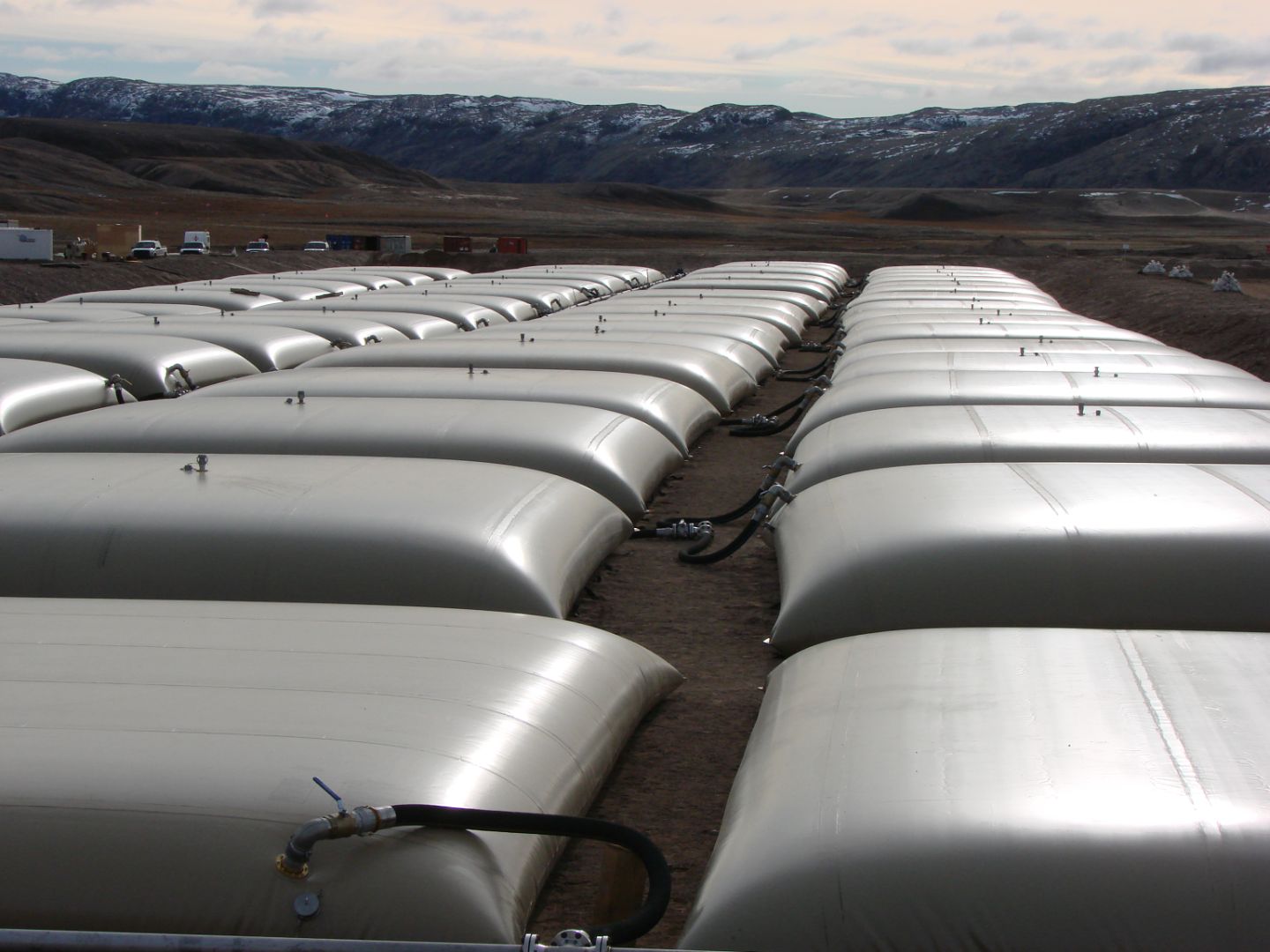
SEI Industries is the first company in the world to manufacture collapsible fuel tanks (bladders) that are certified to a national standard by an independent accredited third-party. This certification provides assurance to users that their temporary fuel storage tanks have been constructed to meet strict standards for material properties which, in turn, provides better environmental protection, longer service life and a reduced carbon footprint.
SEI’s King series of tanks – the Arctic King, Desert King and Jungle King – are now all certified by Intertek, to meet the CAN/CSA-B837-14 standard.
Each tank type is designed to address a specific climate challenges and constructed from purpose-engineered material to withstand long duration fuel exposure as well as difficult conditions such as extreme cold, high UV levels, high temperatures or high humidity.
What is CAN/CSA B-837-14?
The first edition of the new CAN/CSA B-837-14 collapsible fabric storage tanks (bladders) regulation was released in July, 2014, by the Canadian Standards Association (CSA). This new standard represents the world’s first standard for collapsible bladder fuel storage tanks (or pillow tanks).
For years, regulators, operators and manufacturers in Canada had no credible reference document that explained the minimum requirements for the use of these storage bladders even though it was common knowledge that the disposable tank approach, as described by the US military specification, was not working.
Now, this new standard provides a reliable source of information to ensure that the use of collapsible fuel bladder tanks is accomplished in the best manner possible.
Paul Reichard, manager of SEI Industries’ Remote Site/Environmental division was a participating member and vice-chair of the CSA standards technical committee that prepared the new standard. SEI’s participation first began in 2008 when federal environmental regulations in Canada changed – for the worse. “They accidently excluded collapsible fabric fuel tanks from the regulations, making it difficult for major clients like the Department of National Defence and mineral exploration companies to use bladders.”
Once Environment Canada learned of the mistake, they set out to fix the problem by developing a national standard to recognize bladders as a safe, cost effective and environmentally-friendly method of temporary fuel storage in remote sites. The CSA took over the development work with regulators and end users across Canada as well as manufacturers around the world.
“Without regulation, the fuel bladder can get a bad rap,” says Reichard. “Often, companies with inferior manufacturing capabilities or military surplus tanks, that have passed their shelf life, sell tanks to unsuspecting clients. These bladders can leak or rupture and make all bladders look bad.”
For the past decade, SEI has worked hard to educate its clients and regulators that bladders are a far better option than traditional means of fuel storage. Fortunately, the new CAN/CSA B-837 standard for fuel bladders now sets the stage for greater understanding, awareness and credibility.
To read the actual standard, a French/English version can be downloaded here:
